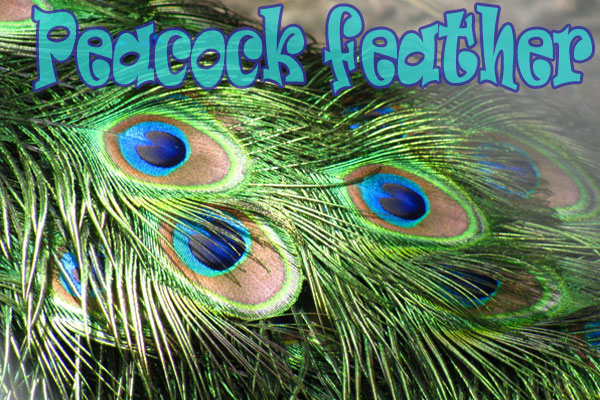Significance of Peacock Feather
Posted on 23/02/2015 I by: Priya Sharma

Numerous cultural and religious groups throughout the world revere the peacock feather as a powerful, mythical symbol. Although the centuries-old custom of celebrating the majestic bird began in India, the tradition was adopted throughout Asia and Europe as societies came into contact with this unique creature. Legends abound to explain the symbolic meaning of the intricate patterns and vibrant colors found in the peacock's resplendent feathers.
The Eyes of Heaven
Legend holds that the Greek goddess Hera gave the peacock 100 eyes, which once belonged to the giant Argus, so that it could protect her by seeing the past, present and future. The vibrant bird, which belongs to the same family as pheasants, is often used to portray the beauty, love and compassion of the Hindu goddess Lakshmi and the Japanese goddess Kwan-yin. The all-seeing eyes on the feathers also figure prominently in Christian folklore as a representation of God, who is vigilantly aware of all of humanity's thoughts and actions.
Spiritual Renewal
Each summer, the peacock sheds his tail feathers in order to regenerate more brilliant ones. Buddhists adopted this symbol of renewal to teach the importance of letting go of negativity in order to move forward on the path of enlightenment. Medieval Christians, who believed the flesh of the bird did not decay, used the peacock to represent Christ's birth, death and resurrection. Colorful feathers appear in stunning artworks decorating church cathedrals, tomb sculptures and building mosaics throughout Western Europe and the Middle East.
Acceptance and Arrogance
When a peacock seeks a female's attention, his dazzling fan-like tail flares out several feet. Western artists have frequently used this confident display of the feathers to depict vanity, which is a characteristic of pride, one of the seven deadly sins in Christianity. In contrast, Buddhists admire the openness of the peacock's plumage and often use the feather as a meditation tool to reflect upon how excessive pride and an obsession with beauty can prevent the achievement of goals.
Protective Powers
The peacock's eye-studded feather is an important cultural talisman to ward off evil spirits. It is also highly regarded for its powerful medicinal uses. The Sinhalese in Sri Lanka believe the feather can fix injured bones and repel poisonous bites. Early Christians covered deceased bodies and precious objects with peacock feathers to prevent decay while early Muslims used the decorative quill to mark passages in the Quran.

